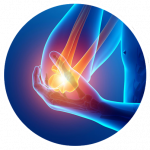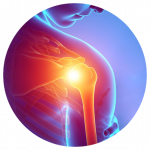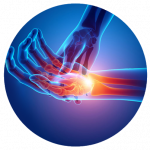Musculoskeletal Disorders
Many of the tasks we undertake at work and at home carry the risk of a musculoskeletal injury. We are constantly lifting, reaching, carrying, and repeating the same motions again and again. These activities can cause wear on our muscles, ligaments, joints, and tendons which are referred to as Musculoskeletal Disorders (MSD). This wear can result in strains, inflammation, meniscus tears, rotator cuff injury, herniated discs, or repetitive motion disorders such as carpal tunnel syndrome. In 2020, there were nearly 1/4 of a million work related musculoskeletal injuries that resulted in employees being taken off of work to recover. This also represented 20% of all work place injuries and illnesses resulting in days away from work.
Though the number of these injuries has continued to decline over the past 10 years, they remain a significant contributor to workplace injuries. The implementation of risk analysis and ergonomics programs has contributed to this decrease, but recognition of the contributing hazards by employees is the trigger that many of these programs rely upon to begin a risk analysis and address the identified hazard.
Because these programs rely on the identification of the job tasks and associated hazards that can result in a MSD. The risk factors can be divided into two categories – primary and secondary risk factors.

Primary Factors
Primary Risk Factors are those elements of the task that have a direct impact on how much stress we must put on our body to perform the task. Primary Risk Factors include:
• The amount of force that must be exerted
• The body posture needed to perform the task
• The amount of repetition required to complete the task
• How long and how often the task is completed

Secondary Factors
Secondary Risk Factors are not always as obvious as the primary factors. Secondary Risk Factors are elements of the work environment or task that can reduce or increase the severity of the Primary Risk Factors. These include:
• Environmental conditions of the workplace (temperature, lighting, congestion, vibration, & ventilation
• Work schedule (rate of task completion, frequency of task, task variation, task recovery cycle, and break frequency)
• Workplace layout & conditions (seating, work benches and surfaces, flooring material, items at height)
• Material/items to be handled (size & shape of item, size of controls, condition of item, weight distribution, handholds or grips)

Awkward Posture
One factor that we can easily address in the workplace and at home is that of awkward posture. Frequently we can be our own worst enemy by choosing to perform tasks in awkward and uncomfortable positions rather than taking a few moments to assess the situation to find better ways to get the job done. Awkward postures include:
• Kneeling or squatting
• Reaching
• Working overhead
• Bending forward or to the side
Taking a few minutes to evaluate these tasks allows you the opportunity to identify alternative ways to access the work point. This may include lifting or lowering the item to be worked on or the work surface itself, using a ladder or elevated platform to reach items, or simply getting a different tool.
MSD’s result in 20% of workplace injuries & illnesses
Though the number of these injuries has continued to decline over the last 10 years, they remain a significant contributor to workplace injuries.
Injuries related to musculoskeletal disorders continues to be a significant contributor to workplace injuries. By evaluating our routine tasks and making what is often simple adjustments, we can prevent or reduce the risk of musculoskeletal injuries at work and home. Addressing these habits and conditions at both home and work helps make safety part of our daily routine and not something we simply turn on and off at work.
Applications International Corporation “AIC“
1018 E Sahara Avenue Suite 350 Las Vegas, NV 89104
10920 Via Frontera, Suite 400 San Diego, CA 92127
Phone (858) 673-2174
Toll Free (855) 242–6969
Privacy Policy